Art in Democracy - Sculptura #2
19 Jan 2024 - 10 Mar 2024Gare Maritime - Tour & Taxis Site
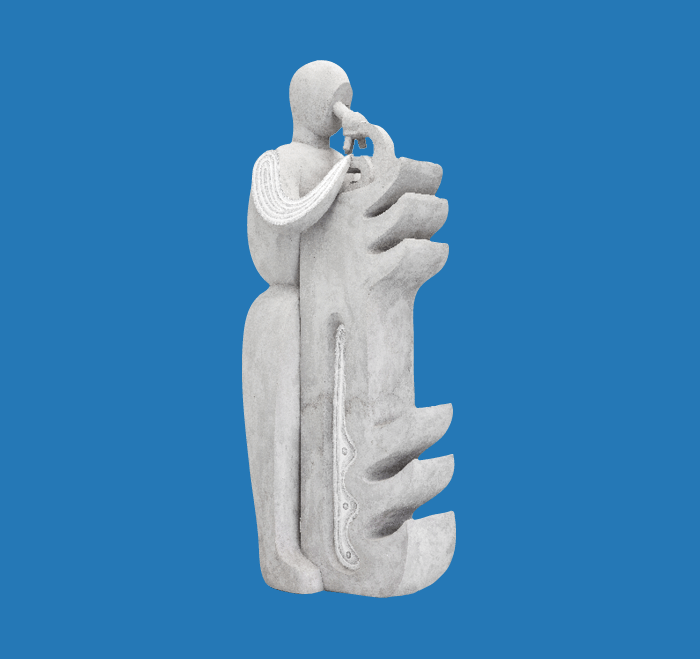
Art in Democracy - Sculptura #2
Celebrating the mastery and creativity of artists across Europe, the second edition of the Brussels Sculptura Festival reflects the unique artistic legacy and contemporary vision of their respective countries. To this end, for the first time, a selection of sculptures from the European Parliament Contemporary Art Collection will be included in Sculptura with the aim to bring together diverse perspectives, styles and cultural backgrounds.
The above selection provides an exploration of the relationship between art and democracy, as highlighted in the temporary exhibition Art in Democracy, on view in the Parlamentarium in Brussels until 7 January 2024, in the Visitors area of the European Parliament in Strasbourg until 18 September 2024, and as part of the Hemicycle visit in Brussels until the end of June 2024.

Why Art in Democracy? What is democracy? Why has the European Union embraced democratic values? The selected artworks contribute to address these questions, providing an insight into how democracy has been interpreted by visual artists from different European countries. On display are the critical and personal visions of each featured artist, who have taken a clear stand in supporting democracy through their production. Their work highlights the need to uphold democratic rights and freedoms, reminding us that European citizens will play a key role in the democratic process by casting their vote in the upcoming European elections in June 2024.
The European Parliament’ participation in Sculptura offers an artistic interpretation of different aspects of democracy, highlighting its relevance for diversity, inclusiveness and freedom of expression. The immersive experience encourages a public dialogue, thereby stimulating a deeper understanding of the role that art plays in shaping democratic values and our democratic society.
Art is a powerful tool for communicating and generating awareness about different problems. Some important trends in contemporary art penetrate and transcend straightforward appearance of our daily lives. There are art practices with names such as Artivism, Engaged Art, Community Art, Ecological Art, etc., which utilise art as a tool to a reflective and critical eye on social and political issues. It has the ability to move and connect, to awaken thoughts and ideas, and be the starting point for civic dialogue and deeper conversations about what is relevant to the community. As such, art becomes a means of communication that goes beyond the academic and museum world to reach a broader audience.
It should not be forgotten that the artworks on display both at Sculptura and Art in Democracy, like many others featured in collections and exhibitions throughout Europe, have been born largely from the possibility that a democratic society offers to individuals the freedom of expressing their opinion and thoughts through diverse means. One of these communication channels is the artistic one, as recognized by the European Parliament:
“The promotion of European cultural diversity and of the awareness of common roots is based on the freedom of artistic expression…”.
“(…) the shared values that hold together our societies, such as freedom, social justice, equality and non-discrimination, democracy, human rights, the rule of law, tolerance and solidarity, are crucial for Europe’s future. (…) Emphasises the rich contribution of European artistic production to cultural diversity and the role it thus plays in spreading the values of the EU and exhorting European citizens to develop critical thinking (…)”.
The European Parliament’s participation in Sculptura, like the entire exhibition Art in Democracy, is available in 4 languages on the dedicated website. This also includes a pedagogical kit for educators, allowing teachers to bring the topic to life in the classroom and inviting students to reflect on democracy and what it means to them through various artistic activities.
Symbols of the European Union
Rodolfo Zilli commemorates Robert Schuman, a Luxembourg-born French stateman, who was one of the key architects of European integration in the aftermath of World War II. Twice Prime Minister of France, a reformist Minister of Finance and a Foreign Minister, he was instrumental in building post-war European and trans-Atlantic institutions and is regarded as one of the founders of the European Union, the Council of Europe and NATO. In cooperation with French politician Jean Monnet, he drew up the internationally renowned Schuman Plan published on 9 May 1950, a date now regarded as the birth of the European Union. The Bust of Robert Schuman (1967) serves as a tribute to Schuman’s visionary leadership and his instrumental contribution to shaping Europe’s future, seeking to create a peaceful and cooperative Europe following the devastation caused by two world wars. The sculpture serves as a reminder of the values and principles that the EU stands for, such as peace, solidarity, and cooperation.
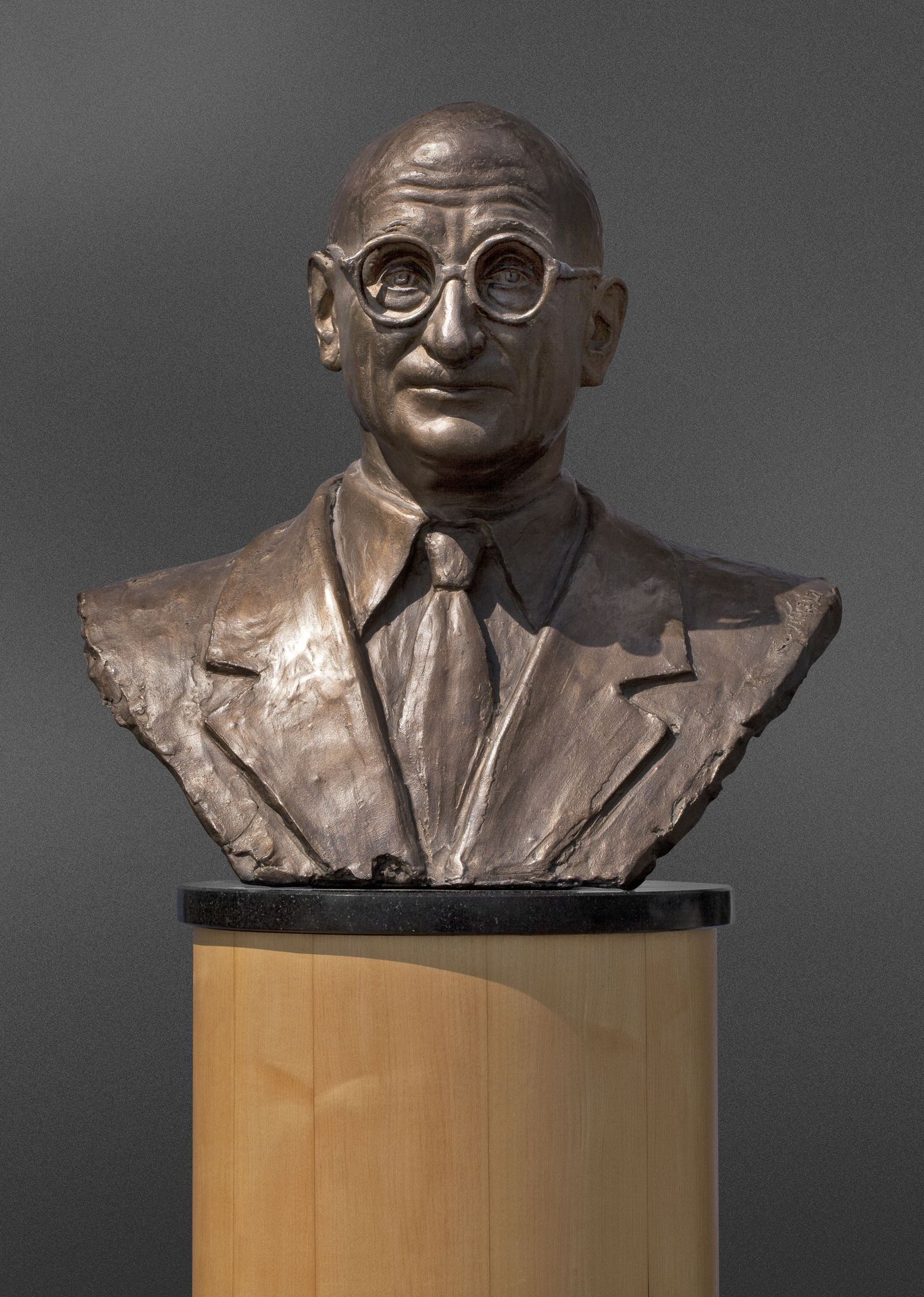
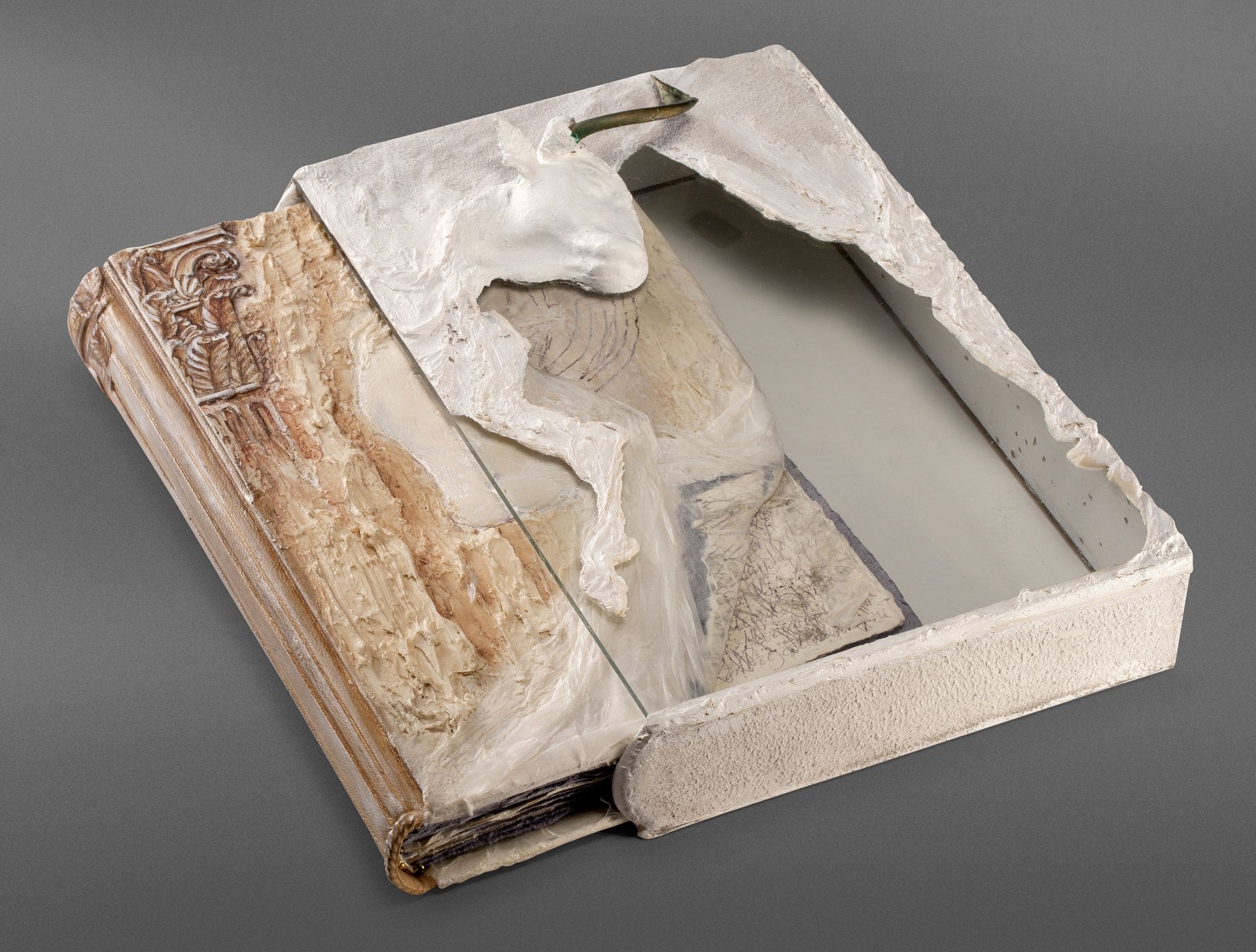
The book, as a material and cultural object, has always been at the centre of Claudine Heili’s work. Poésies européennes (1991) is the result of an ambitious undertaking centred on the study of Europe’s poetic tradition. Indeed, 15 European regions and cultures are represented in the book; for each culture, Heili selected one or several written excerpts by famous authors to embody that culture’s poetic heritage. Additionally, the cover beautifully illustrates the Greek mythological figure Europa, complemented by the bull’s head in relief on the delicate glass casing.
Centring his work on the idea of the coexistence and development of human values, Cristóbal Gabarrón’s art features in global movements of unity and cooperation. Gabarrón’s Twelve European Muses (1992) is a series of twelve steel sculptures: La Meuse / Belgium, Bjarke / Denmark, Tijg / The Netherlands, Kells / Ireland, Il Risorgimento / Italy, Pleyade / France, Minnesänger / Germany, Sophos / Greece, Mosela / Luxembourg, Lusíadas / Portugal, Elegia II / Spain, Brunanburh / United Kingdom. He refers to the muses of ancient Greek mythology, deemed as the sources and guides of inspiration to all manners of discovers and creations, from science to art. Present throughout much of European art history, especially with the revival of classical antiquity during the Italian Renaissance, the “European” muses proposed by Gabarrón allude to the twelve member states of the pan-European community at the time, subtly evoking aspects of their national character and their traditional geography.

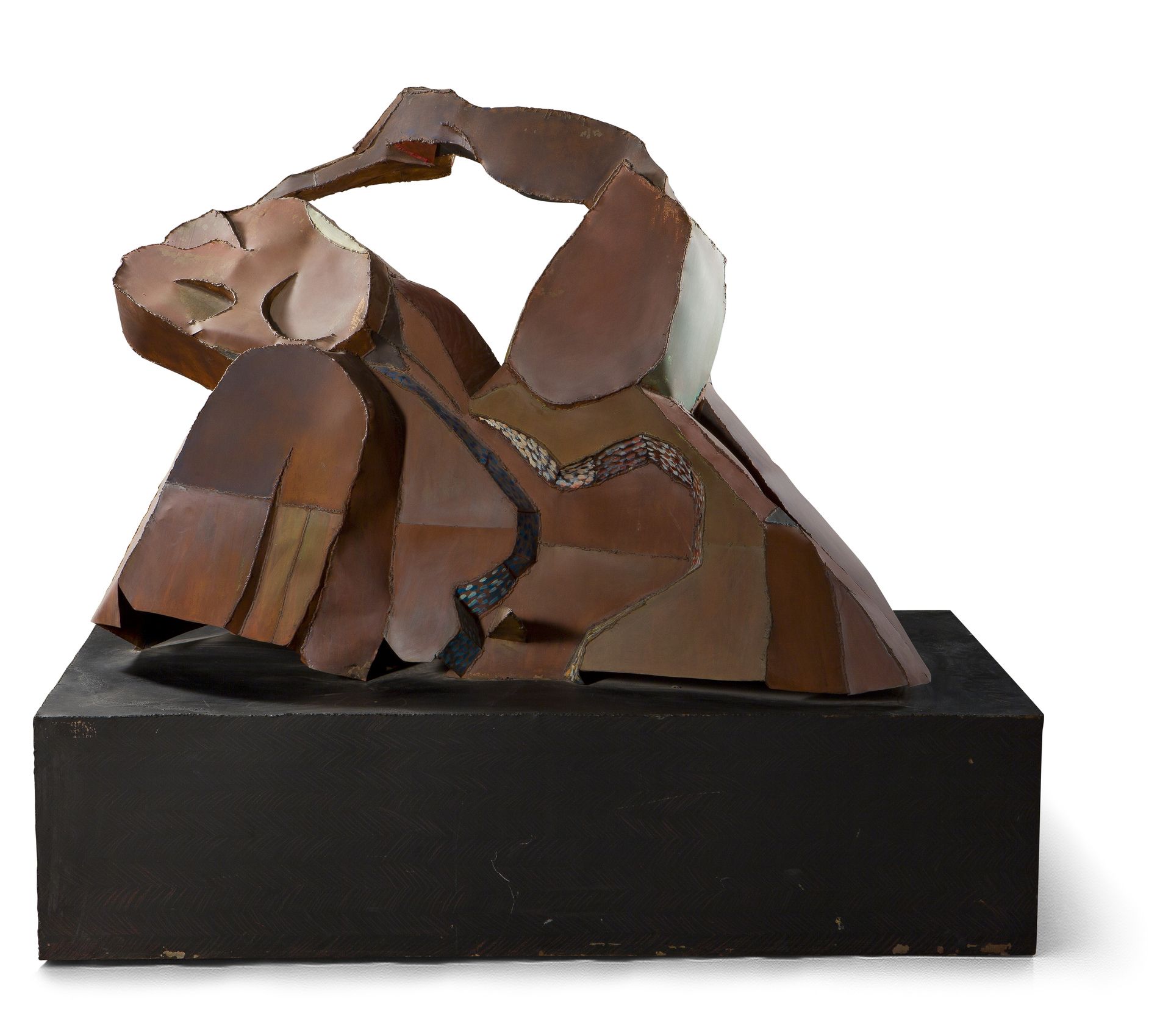

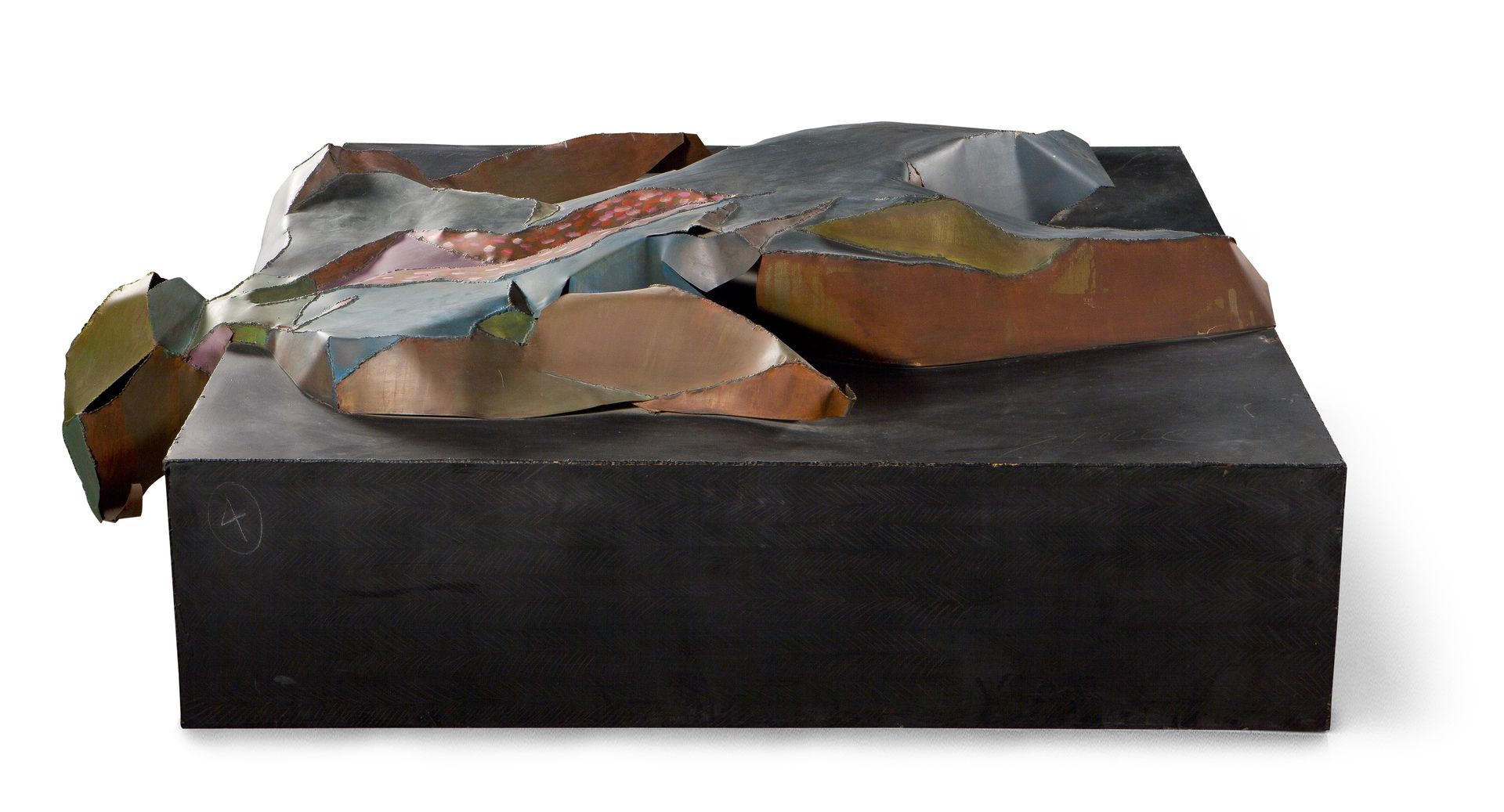
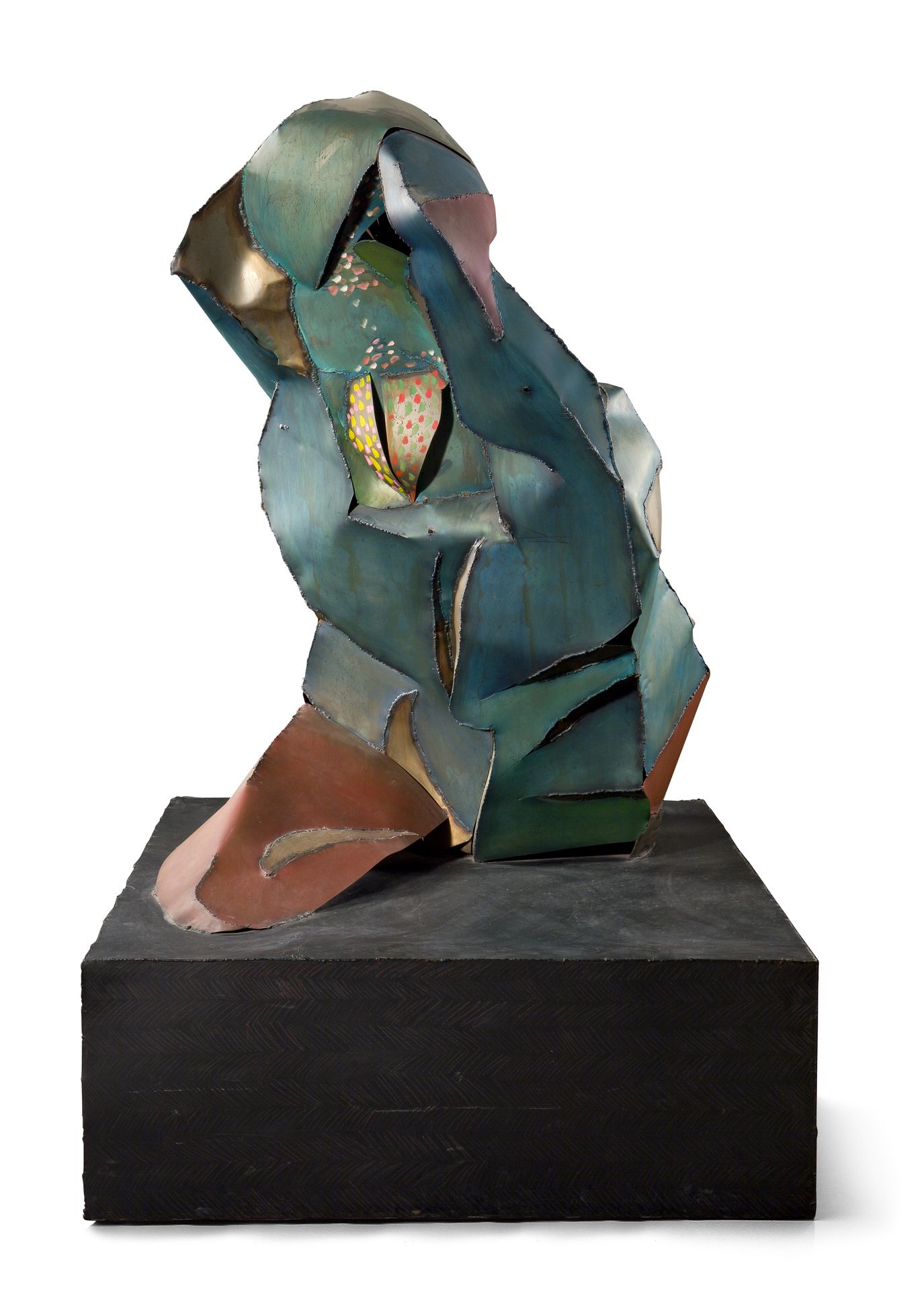

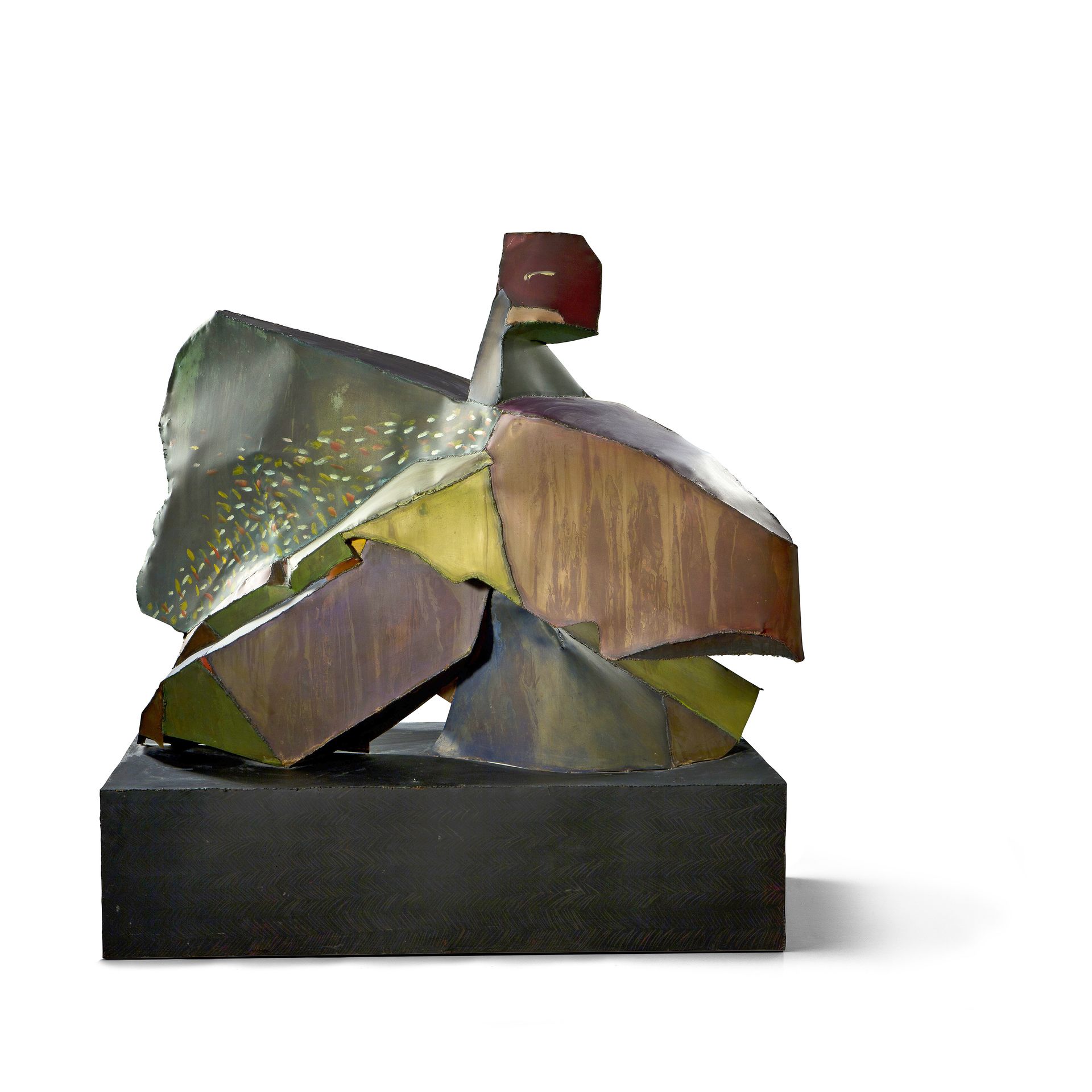
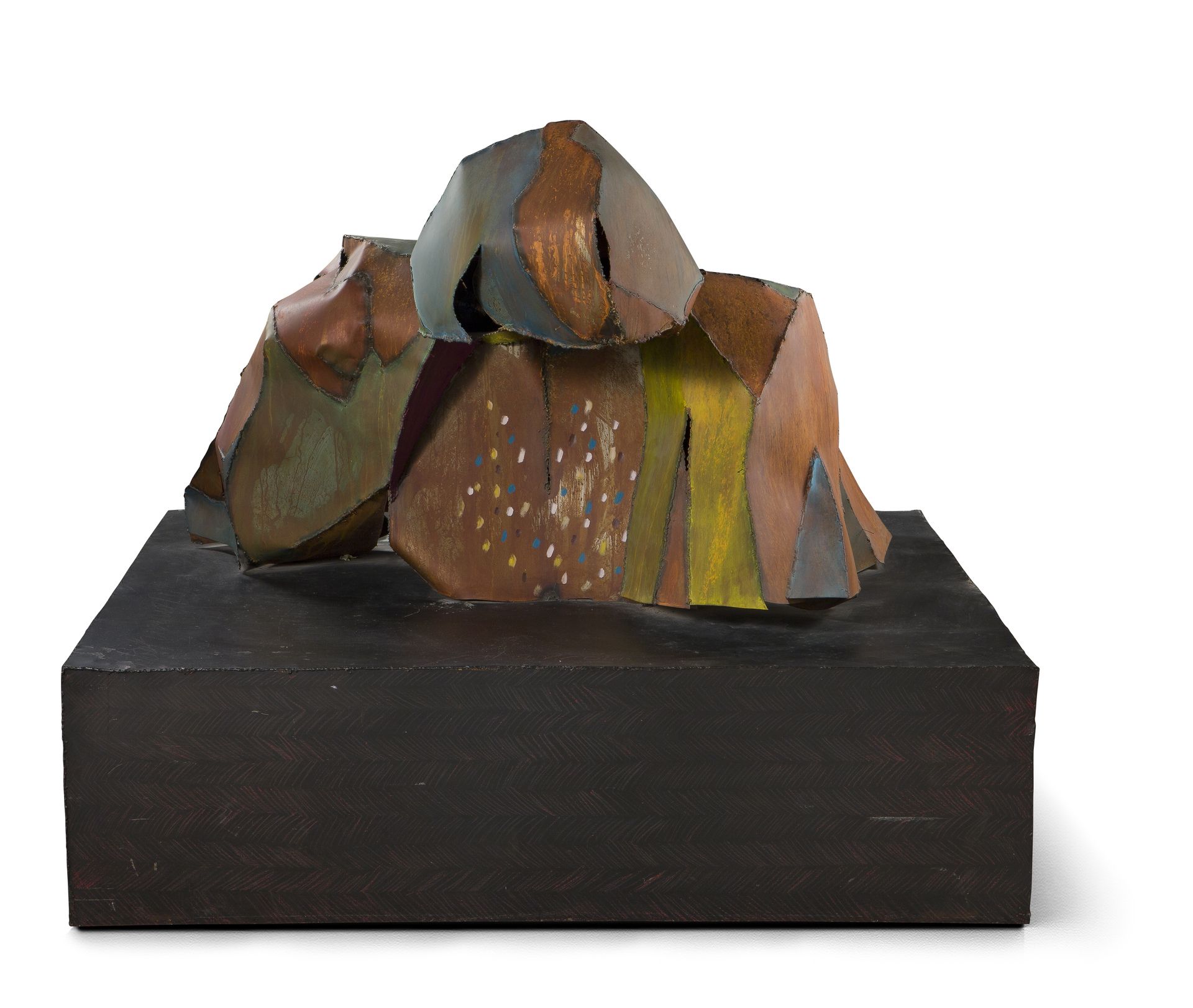
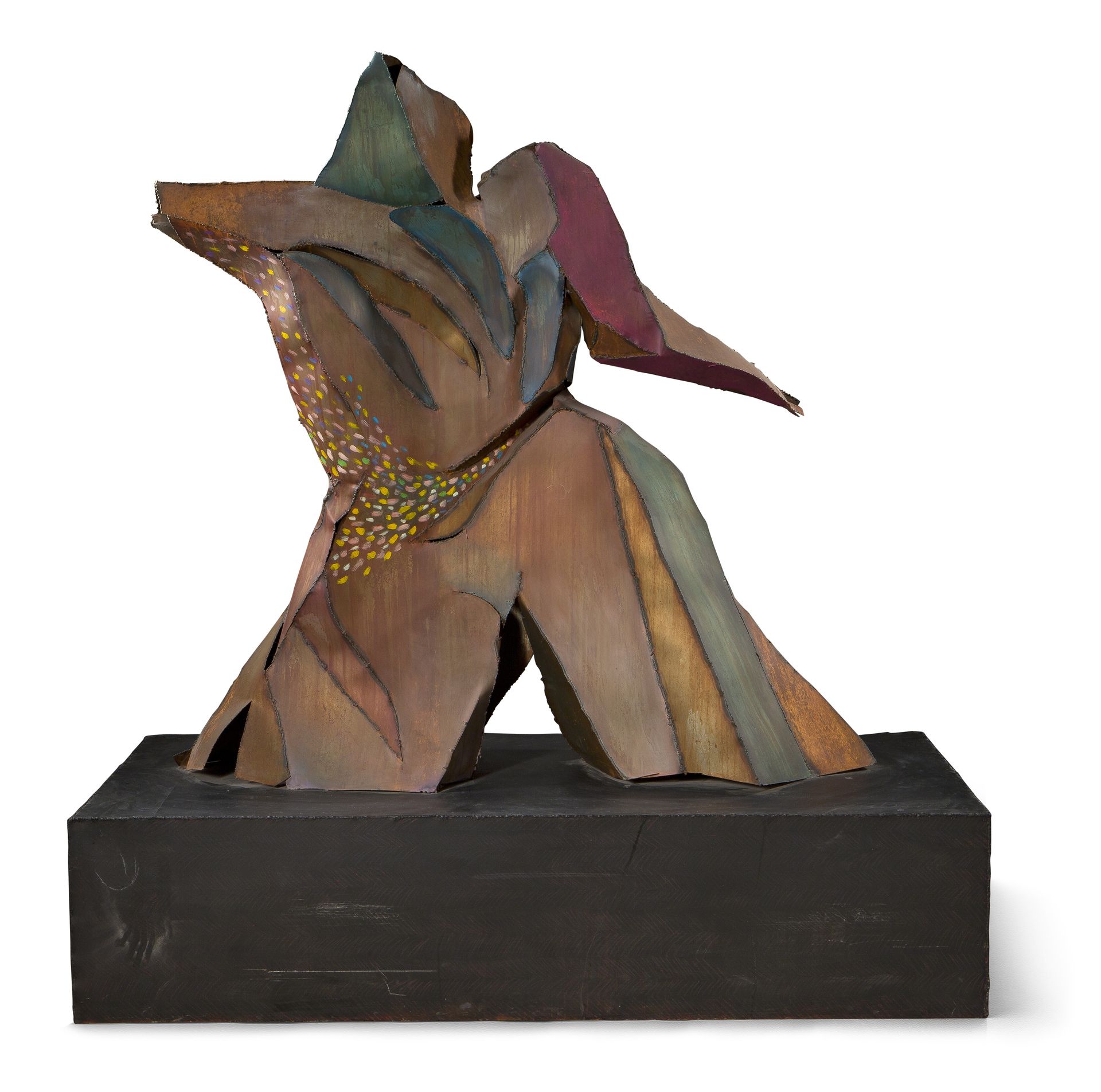
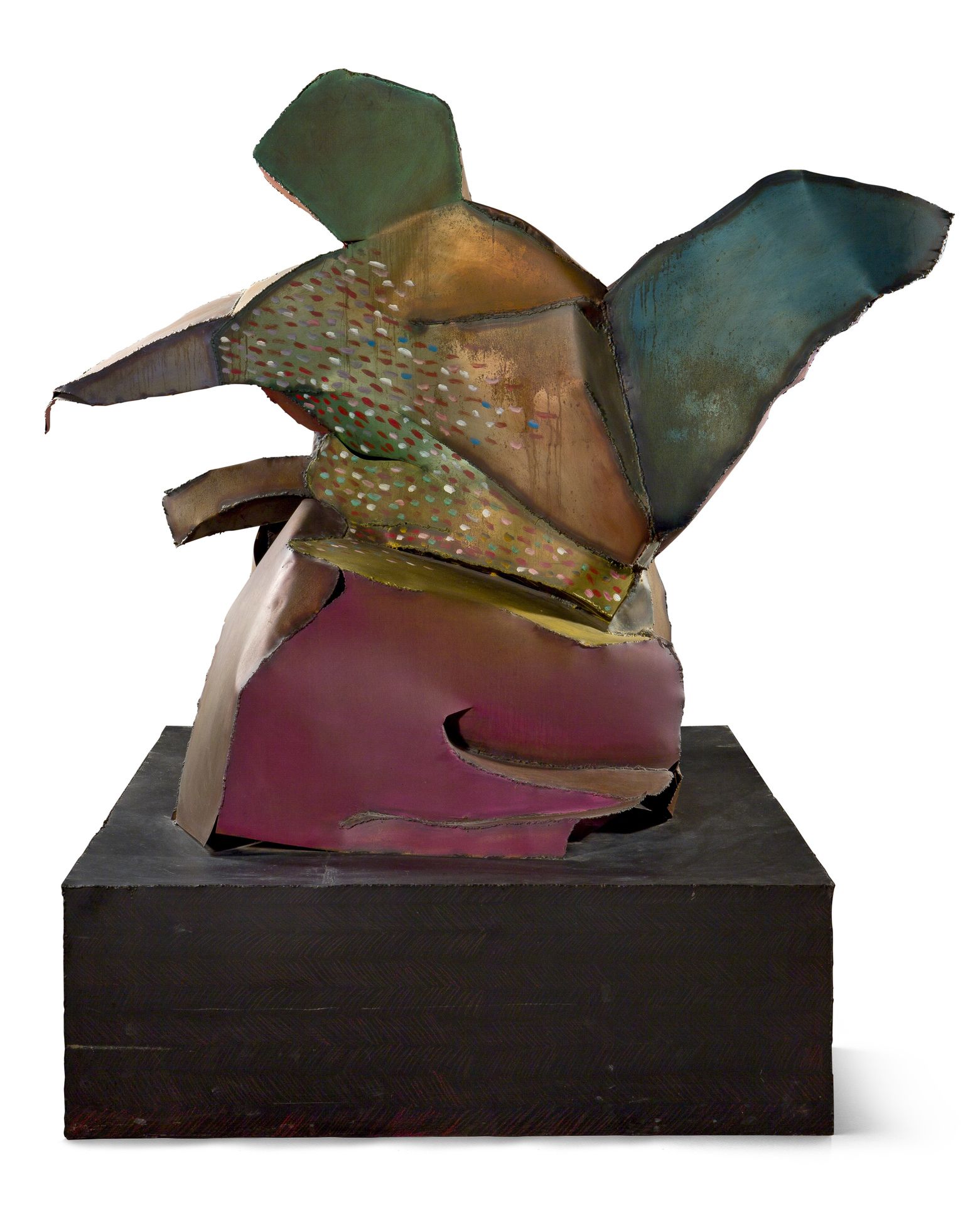
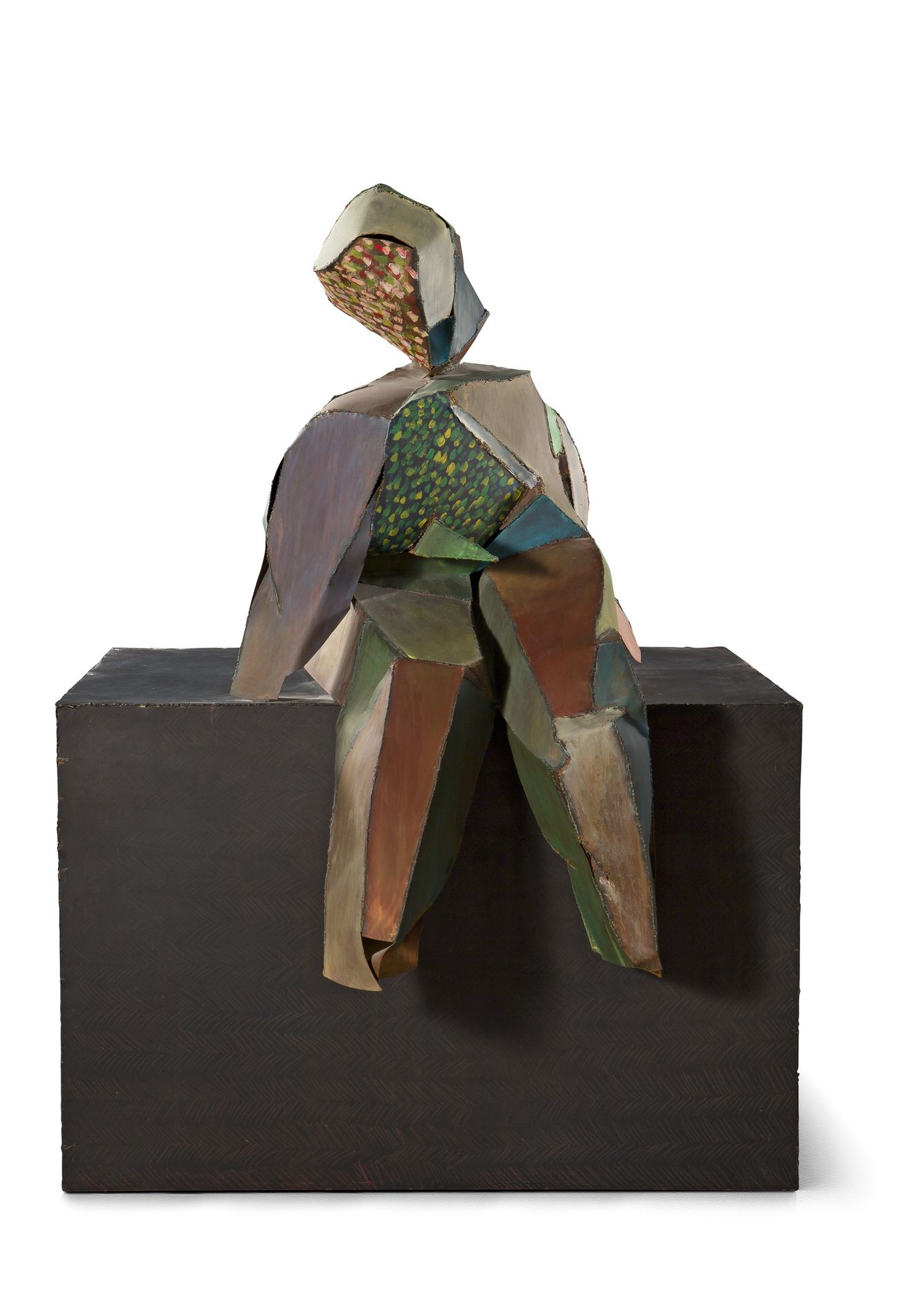
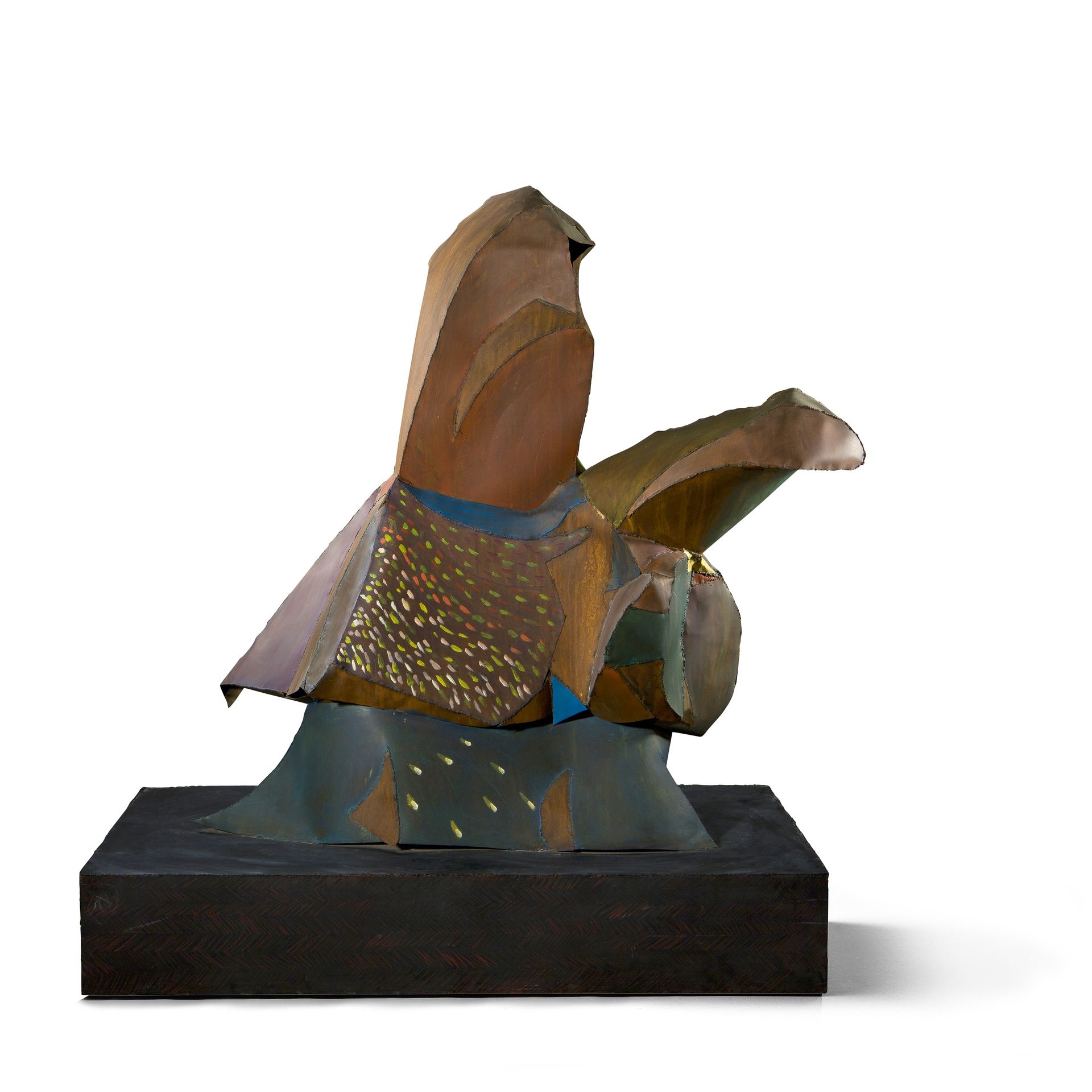
Above all, his work relates to the human figure. About his anthropocentric creations, Gabarrón states that he “was never very much in favour of revealing the content of the work, (…) of turning each work into a suggestive tool that awakens the imagination (…)”. In this regard, the use of colour is one of Gabarrón’s focal points; his poetic applications of vivid and resplendent colours saturate his sculptures. In fact, the French art critic and philosopher Pierre Restany referred to Gabarrón as a “great humanist of colour”. The Twelve European Muses suggest as much: although each object is undeniably tangible in real space, the chromatic and graphic arrangement of the fantastic dream-like figures allude to a preferred frontal point of view. A similar observation can be made about another of his famous contributions to the European neighbourhood in Brussels, Enlightened Universe (2015), which was inaugurated in celebration of the United Nation’s 70th anniversary. Showing affinity with his sculpture series at the European Parliament, colourful anthropometric cut-outs join hand in hand around a central spherical element, the globe, creating a human chain of global citizenship, solidarity, tolerance, respect for nature and shared responsibility.
The relationship between human rights and democracy.
In close connection to the above, Cathy Carman regards the human body as the documentary instrument of (hi)story. Technically, she specifically refers to it as ‘the’ story, implying that, by understanding the human body, one has access to understanding itself. Masquerade (1992), a highly expressionistic bronze sculpture, is an attempt to capture a haptic feeling and render it evident to the viewer. A figure balances on an uneven and tumultuous terrain, which mirrors the inner state of the body; it is an outward show of one that (literally) screams pain, loss and existential crisis.

Democracy is a fragile equilibrium.
Seraphita (1989) by Rui Sanches is composed of two abstract figures that mirror each other in a seemingly confrontational stance. Each equipped with a pole, it is unclear whether the scene is that of a battle or a dance. Either way, their symmetrical placement forms an invisible bridge between the figures, despite the distance that separates them. Such a delicate relationship is representative of how democracy similarly relies on various interconnected elements and institutions functioning harmoniously, which can be easily disrupted or damaged by external forces.
It is further interesting to note that Seraphita is a fictional character created by French author Honoré de Balzac in 1835, featured in the novel of the same name. Seraphita challenges traditional notions of gender, blurring the lines between male and female, and transcending the physical realm. The character portrays an androgynous being, creating a dynamic that merges both masculine and feminine attributes. Seraphita is depicted as having the ability to embody characteristics of both genders, blurring the boundaries between masculine and feminine qualities. This depiction reflects a mystic understanding of the duality and unity of gender, suggesting that true spiritual enlightenment surpasses the limitations imposed by societal constructs. Moreover, Seraphita’s gender ambiguity can also be seen as a symbol of the quest for wholeness and a reflection of the mystic’s journey towards the divine. The merging and harmony of opposites, such as male and female, here portrayed by Sanches by the mirrored abstract figures, represent the union of polarities within oneself and the pursuit of a transcendent spiritual experience.



Ovidiu Maitec is often compared to the Romanian artist Constantin Brâncuși, considered one of the most influential sculptors of the 20th century, due to their cultural origin and medium of choice. Additionally, both were émigrés who established their career abroad. Indeed, Maitec was one of the rare Romanian artists allowed to travel during the communist era, despite geographical and political divisions. The 1960s marked a shift in his work towards abstract woodcarvings imbued with strong political inclinations. An example of which is Equilibrium (2000),wherehe managed to reconcile the archaic force of wood and the fascination with the technological revolution of the contemporary world. In contrast to the cold, industrial forms of integrating technology into sculpture, Maitec chose a soft approach, whereby the sense of engineered permanence complements the symbolism of balance and equilibrium he has tirelessly varied. Equilibrium embodies the culmination of this research with longevity, symmetry and proportionality all emanating from a piece that likely reads as a political statement.
Andrea Pézman’s 3D>HTML< / Unlimited Book (2010) is the counterpart of contemporary hi-tech artworks that use the latest technology. Paradoxically, we find instructions for creating digital web pages are written on craft paper. Looking closely, the individual paper strips of text build on each other, so that the beginning and end of a particular story are in the same place. In this way, this so-called “book” becomes a symbol of an infinitely repeating story, a Möbius strip – a double-paradox, whereby a two-dimensional object turns three-dimensional. As it has never been observed in our organic environment, it is sometimes referred to as an “impossible shape”. However, practical applications of Möbius strips are found in the world of human invention, used, for instance, in continuous-loop recording tapes, typewriter ribbons and computer print cartridges.
Democracy’s resilience in a changing world.
In our rapidly changing world, it is generally recognized that the greatest threat to human rights is the climate crisis with its devastating world-wide consequences. Mihai Topescu’s glass sculpture Fabulous Fish (2010) highlights how the natural world faces new challenges for survival. Through glass, Topescu found a way not only to combine the volume of sculpture and the chromatic quality of painting within a fragile transparency, but also to represent the very fragility of nature itself.
The sculptor Anna Hulačová is inspired by the Czech folk tradition, be it in the materials she uses or in the forms and details she depicts, translating this inspiration into the language of contemporary art. Her work is characteristic for its formal and thematic richness, associative symbolism, and formal ties with the past. Unlike its classical ancestry, Kooperace 3 / Cooperation 3 (2020) is made of concrete, a brutalist feature that points to our time’s hybrid nature, where seemingly distant or even opposed forms merge and mutate into a new reality. Additionally, the greyness of the material heightens the apocalyptic nature of the work, a reminder that materiality, physical experience and encounter have not yet been rendered obsolete in a changing world.


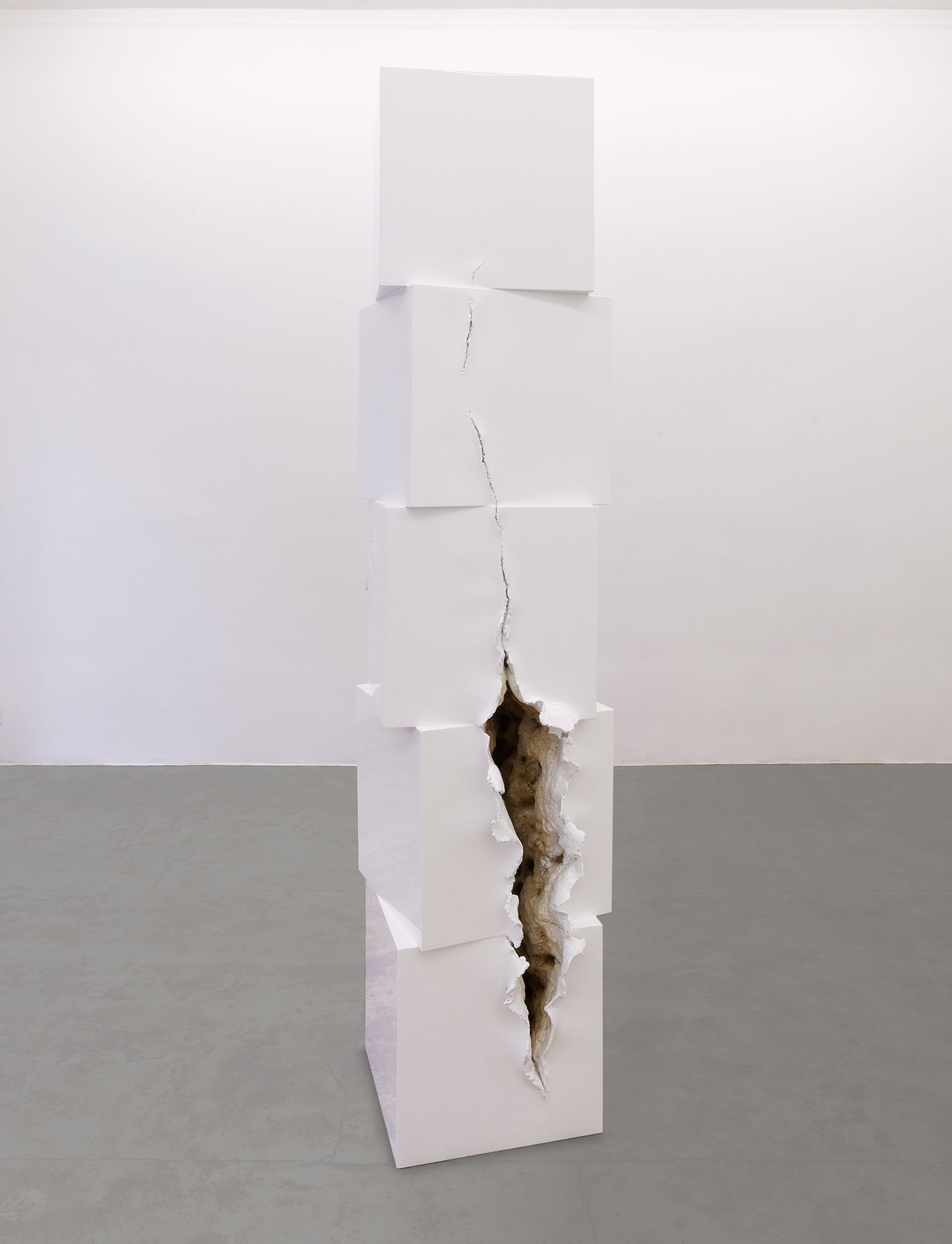
Nesting Site (2018) by Sabine Gross is made up of five white epoxy-resin cubes stacked one on top of the other, towering at an impressive height of 2.5 metres. This post-minimal sculpture represents a nesting place for an imaginary insect colony, whereby the insects have taken over a highly industrialised space. It refers to the need of the animal populations to adapt – sometimes by destruction – to find space in a natural environment colonised and/or destroyed by human beings. Here, their organic disruption is evinced by the decomposition of the high-gloss industrial surface: inescapable to the eye, a tear runs through the otherwise immaculate appearance. Allowing nature to, quite literally, break into the context of art, Gross puts into question the sustainability, durability and value of art. Nesting Site is, in fact, an interrogation, asking what it will be like when someone finds an artwork a thousand years after nature has left its mark. What will remain? What will people still know of its cultural value? Or is its pure material value all that will be left?
Read less